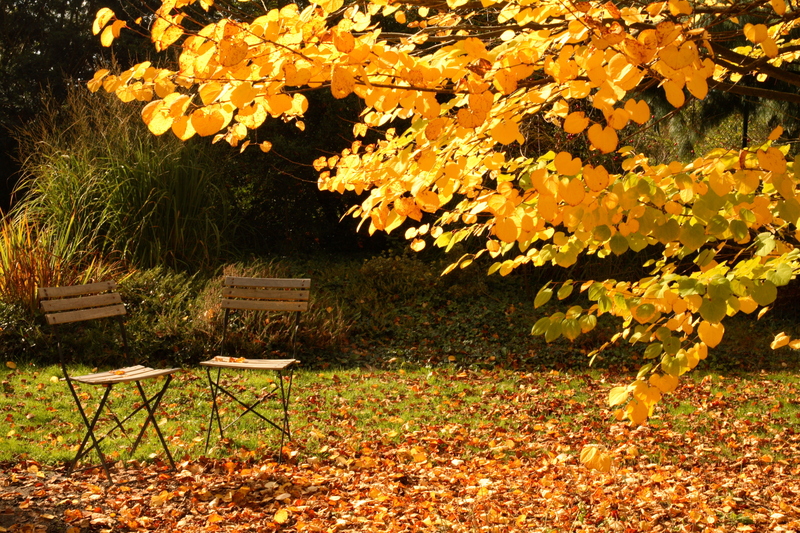Orchid Care Essentials: What You Need to Know
Posted on 28/05/2025
Orchid Care Essentials: What You Need to Know
Orchids are among the most captivating and elegant houseplants, admired for their striking blooms and exotic appearance. However, their beauty also comes with a reputation for being difficult to care for. In reality, orchid care tips are easy to master when you understand their basic needs. This comprehensive guide will arm you with the orchid care essentials to ensure your plants thrive year after year.
Understanding Orchids: A Brief Introduction
Orchids belong to the Orchidaceae family, one of the largest plant families, with over 25,000 species. They are characterized by unique flowers and a variety of growth habits, which can be epiphytic (growing on trees), terrestrial (growing in soil), or lithophytic (growing on rocks).
- Phalaenopsis (Moth Orchids): Ideal for beginners due to their adaptable nature.
- Dendrobium: Loved for their tall canes and beautiful flower sprays.
- Cattleya: Known as the "Queen of Orchids" for their vibrant colors.
- Oncidium: Also called "Dancing Ladies" for their playful blooms.
No matter the type of orchid, understanding their native habitats helps develop the right care routine at home.

The Basics of Orchid Care
The essentials of orchid care revolve around replicating their natural environment. Let's break down the core elements:
1. Choosing the Right Light
Lighting is by far one of the most critical aspects of caring for orchids. While many believe orchids require direct sunlight, most prefer filtered or indirect bright light.
- Phalaenopsis and Paphiopedilum: Prefer moderate, indirect light--an east or north-facing window is ideal.
- Cattleya, Dendrobium, Oncidium: Need slightly brighter light, such as a filtered south or west window.
Orchids with dark green leaves may not be receiving enough light; those with yellowish leaves could be getting too much. Leaf color is a good indicator of light needs.
2. Watering Orchids Properly
Overwatering is the number one killer of orchids. Unlike typical houseplants, many species are adapted to dry out between rains.
- Water once a week in winter and up to twice a week in summer (depending on conditions and species).
- Use tepid, distilled, or rainwater: Tap water with salts and chemicals may damage roots over time.
- Let excess water drain--never let your orchid sit in water.
- Test by sticking your finger an inch into the potting mix; if it's dry, water.
3. Humidity and Air Circulation
Orchids thrive in humid conditions, especially when grown indoors. Try to maintain humidity between 40%-70%. You can increase humidity by:
- Grouping plants together to create a microclimate
- Using a humidity tray filled with pebbles and water beneath the pot
- Running a small room humidifier nearby
Good air circulation is also vital. Use a small fan set on low, and avoid stuffy or drafty areas to prevent mold and rot.
4. Temperature Needs for Orchids
Most popular orchids prefer warm days and cool nights, mimicking their natural habitat. As a rule of thumb:
- Daytime temperatures: 65-80?F (18-27?C)
- Nighttime temperatures: 55-65?F (13-18?C)
Prolonged cold or very hot temperatures can stress your orchid and inhibit blooming. Some species, like Phalaenopsis, are slightly more forgiving of temperature fluctuations, while others, like Cattleya, need sharper day-to-night drops to bloom.
5. The Best Potting Mix for Orchids
Unlike most houseplants, orchids thrive without soil. Instead, their roots demand excellent drainage and air circulation. The best orchid potting mixes include:
- Bark chips (fir bark or redwood)
- Sphagnum moss
- Perlite or charcoal
- Coconut husk chips
Ensure the mix stays airy and loose. Replace your orchid's potting medium every 1-2 years or when it breaks down and retains too much moisture.
6. Orchid Pot Selection
Choosing the right orchid pot is another essential element. Key guidelines:
- Go for pots with plenty of drainage holes.
- Clear pots allow you to monitor root health and moisture levels.
- Terracotta or clay pots wick away excess moisture and keep roots cool.
Never let roots sit in stagnant water!
7. Feeding and Fertilizing Orchids
Orchids do not require as much fertilizer as many houseplants, but they do benefit from regular feeding:
- Use a balanced orchid fertilizer (20-20-20) diluted to half strength once every two weeks, or monthly during winter.
- Flush the potting medium occasionally to avoid salt build-up.
- Discontinue feeding during the orchid's dormant phase (usually after flowering).
Avoid over-fertilizing as it can burn delicate roots and leaves.
Orchid Blooming: Getting the Most Beautiful Flowers
One of the greatest joys of orchid plant care is watching them bloom. While some species only flower once a year, others can bloom multiple times. If your orchid isn't blooming:
- Review light and temperature--lack of blooms is often due to insufficient brightness or night-time temperature drops.
- Ensure it has a proper rest period after flowering.
- Do not disturb roots unnecessarily during this time.
Tip: Some orchids need a period of cool nights in autumn to set flower spikes. Research your variety's needs for the most successful blooms.
Repotting Orchids: When and How
Repotting is another essential step in orchid maintenance. Most orchids prefer to be snug in their containers, but when roots overflow or potting media decays, it's time for a fresh start.
When to repot:- Every 1-2 years, or when potting mix breaks down
- When roots are crowded or escaping the pot
- If you spot mold or foul odor
- Gently remove the plant from its container.
- Trim away dead, brown, or mushy roots with sterile scissors.
- Rinse healthy roots and remove old potting medium.
- Place in a clean pot with fresh, moist orchid mix.
- Do not water immediately; wait about a week before resuming normal care to prevent root rot.
Repotting can be stressful, so avoid doing it when spikes or buds are present if possible.
Common Orchid Problems and Solutions
Even with the best orchid care, issues may arise. Here's how to tackle some frequent challenges:
Yellow Leaves or Wilting
- Possible causes: Overwatering, root rot, or too much direct sun.
- Solution: Adjust watering, check roots, and move to diffuse light.
Wrinkled or Limp Leaves
- Possible causes: Underwatering, root loss, or low humidity.
- Solution: Increase humidity, water thoroughly, and inspect roots.
No Blooms
- Possible causes: Inadequate light, improper temperature, or nutrient deficiency.
- Solution: Move to a brighter location, check for temperature drops at night, fertilize as needed.
Pest Issues
- Common pests: Mealybugs, spider mites, scale, aphids.
- Solution: Wipe leaves with a damp cloth, use insecticidal soap or neem oil, and isolate affected plants.
Seasonal Orchid Care Tips
Orchid care varies slightly throughout the year. Here's what you need to know:
Spring & Summer Orchid Care
- Increase watering as growth resumes.
- Boost feeding with diluted orchid fertilizer.
- Monitor for pests as temperatures rise.
Autumn & Winter Orchid Care
- Reduce watering as plants enter dormancy.
- Move to a brighter window as daylight decreases.
- Watch humidity--heating can dry out indoor air.

Frequently Asked Questions about Orchid Care
How long do orchid flowers last?
Orchid flowers can last anywhere from a few weeks up to several months, depending on the species and their care.
Are orchids suitable for beginners?
Absolutely! Phalaenopsis orchids are especially well-suited for new plant parents thanks to their adaptability.
Is tap water safe for orchids?
Tap water can be used if it's not excessively hard or chlorinated. If unsure, use distilled or rainwater.
What's the best orchid for low light areas?
Phalaenopsis and Paphiopedilum orchids tolerate lower light conditions better than most.
In Conclusion: Thriving with Your Orchids
Orchid care does not need to be intimidating. By following these essential guidelines--providing the right light, mastering watering, maintaining humidity, and choosing suitable pots and mediums--you'll be rewarded with long-lasting blooms and healthy plants. Remember to observe your orchids regularly; their leaves, roots, and blooms are always sending helpful signals about their needs.
Embrace the art of orchid plant care, and soon you'll experience the joy and satisfaction of cultivating these extraordinary beauties in your home. With the right knowledge, patience, and a bit of practice, anyone can grow thriving, stunning orchids!
Happy growing!

